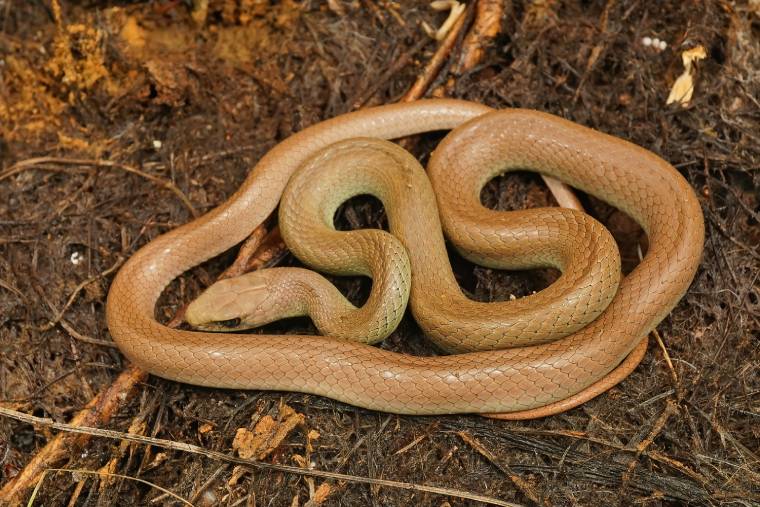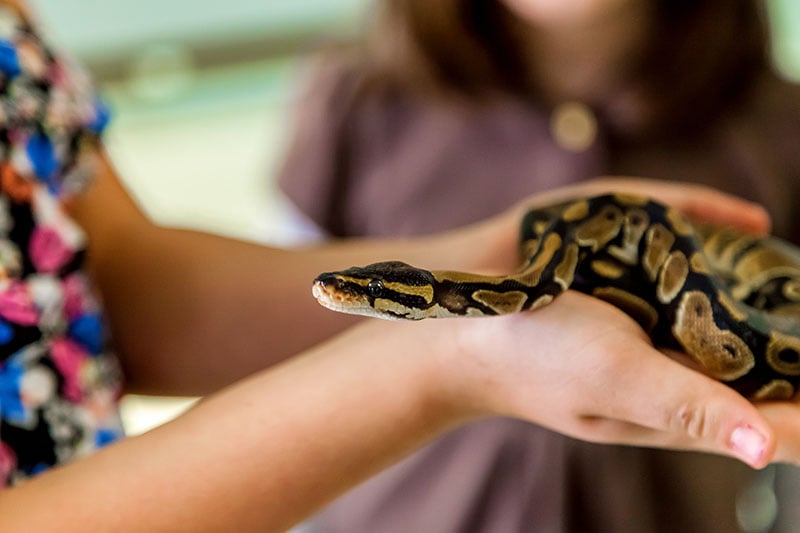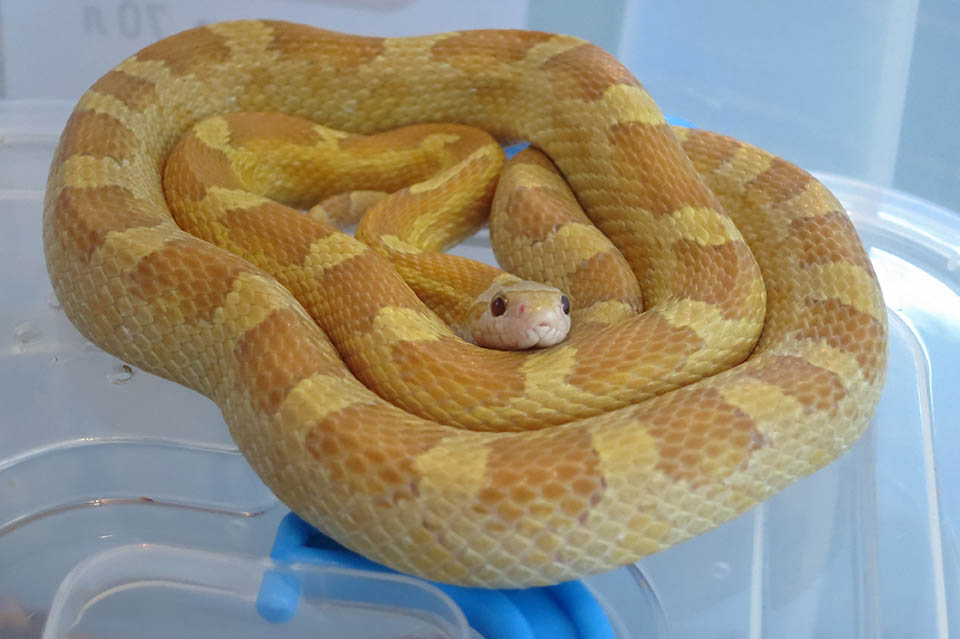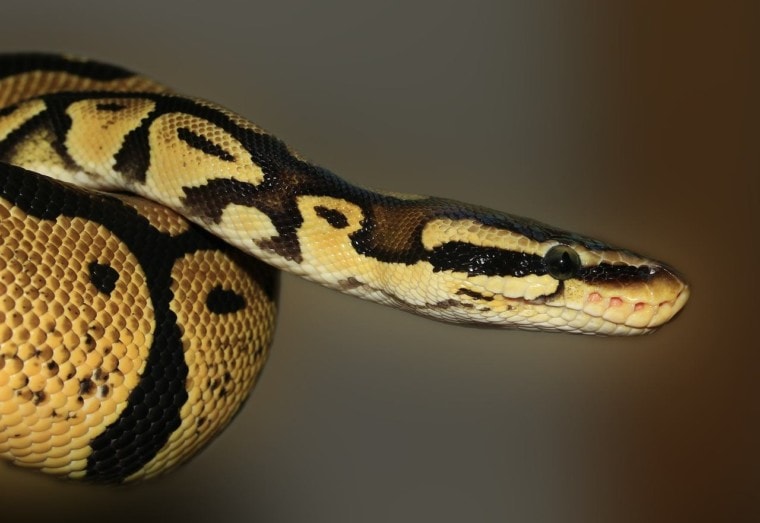
Click to Skip Ahead
Disclaimer: This article has been reviewed for accuracy by a qualified veterinarian. It should not be considered a complete care guide, nor is it intended to replace veterinary advice tailored to your specific pet. Snake owners are urged to consult with their veterinarian about their pet’s health and care.
Ball pythons are popular pet snakes that are known for their size. Some ball pythons can measure over 5 feet in length and weigh nearly 6 pounds. A ball python’s size raises a lot of very good questions about how fast these snakes grow and how big they can get. This guide will go in depth about the average growth weights of ball pythons and what you can expect from a young snake. The keys to healthy growth in ball pythons revolve around diet and environment. Knowing what to expect and how to properly fuel your python can make a big difference in their overall size and health.
Ball Python Overview
Ball pythons are very popular pets among reptile enthusiasts. These snakes are known for their size, docile nature, and their beautiful patterns. Ball pythons can have a wide range of different phenotypes (known as morphs), which can make each snake look highly different from one another. Breeding and collecting different morphs is a very popular reason for owning ball pythons.
Ball pythons are also known for their longevity. Healthy pythons can live to be up to 30 years old. The oldest snakes can be very large and heavy. Ball pythons can make for entertaining and enduring pets that settle into a routine that makes them easy to manage.
Ball Python’s Size and Growth Chart

This growth chart represents the typical growth of a standard ball python. The wide range of sizes represents the normal biological variation in these animals. About 5% of the population will be considered outliers and not be represented in this growth chart. Female ball pythons will typically occupy the higher end of the range and the males the lower end. This chart covers hatchlings through 3 years of age, when the growth of these snakes typically drops off dramatically. Individual growth rates can vary. It’s important to remember that unlike many other animals, ball pythons can have a very wide range of growth outcomes due to many variables that affect their size.
| Age | Weight Range (g) |
| Hatchling | 45 – 80g |
| 3 months | 120 – 220g |
| 6 months | 270 – 360g |
| 1 year | 500 – 900g |
| 1.5 year | 600 – 1400g |
| 2 years | 800 – 1800g |
| 3 years | 900 – 2000g |
| 5+ years | 1000 – 3000g |
When Does a Ball Python Stop Growing?
Technically, snakes never stop growing. A snake can continue to grow until the day they die. You can tell that your ball python is still growing when they shed their skin. This happens when the snake has gained size. However, growth rates will dramatically decrease as the snake ages.
Ball pythons grow very quickly when they are young. They will double or triple in length from the time they hatch to 1 year of age. From 1 year to 3 years of age, they will usually double in length once again. During this time, your snake will also add weight exponentially. Hatchlings start life weighing just 100 grams on average but can weigh up to 1000 grams by the time they reach 1 year of age.
At 3 years of age, your ball python’s growth will slow dramatically. They will still grow slowly and incrementally after this time, but most of the growth will occur in the first 3 years of life.
Factors Affecting the Size of Ball Python
Eating and Feeding Habits
One of the most important factors in your ball python’s size is their eating and feeding habits. Some snakes will eat more frequently than others and this can be due to behavior, the environment, genetics, and the prey offered. Ball pythons tend to prefer to eat at night, as they are nocturnal. You should use a good feeding chart to ensure that your snake is getting enough food. If your snake is not eating enough, you might want to consider consulting with a veterinarian that specializes in exotics. Ensuring that your ball python is eating regularly and ingesting enough prey is key to their overall growth. Food availability early in life has been shown to cause a “silver-spoon effect” which means that these snakes have higher growth rates later in life. Essentially, if your snake is on the small side, their growth rate will always be slightly slower.
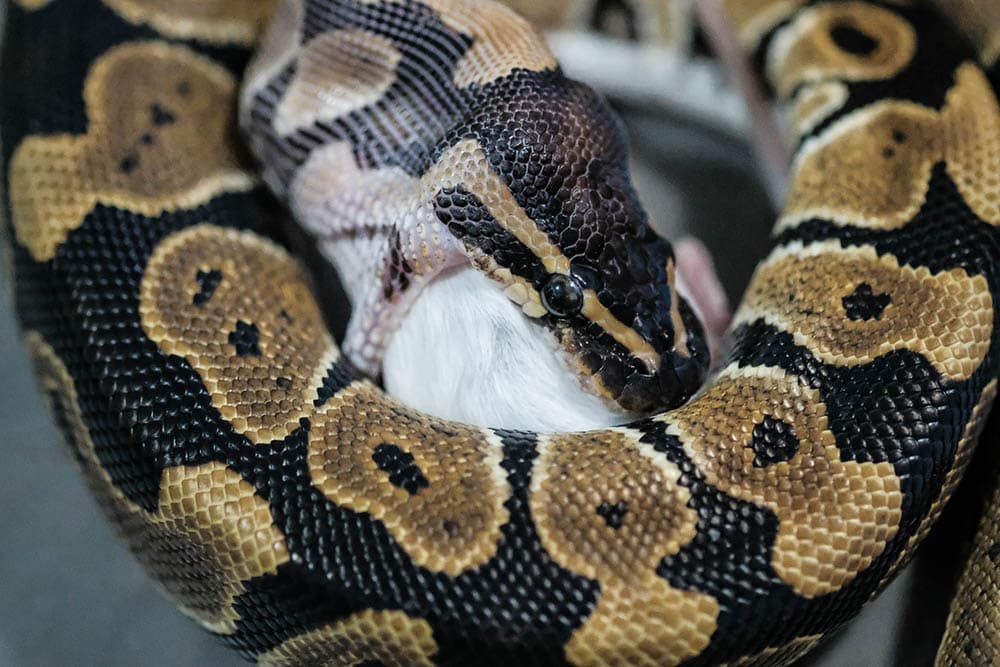
Sex
Ball pythons are one species in which females are larger than males. If you want a large ball python, you should aim at getting a female. Female ball pythons can grow to be 4 to 5 feet long, while males typically top out between 3 and 4 feet. Females are also stockier and heavier than males. The largest snakes in this species are 6 feet long.
Prey
Mice, rats and small birds are the ideal meal to serve your ball python. We recommend purchasing commercially produced feeder animals for the purpose of feeding your snake. Live prey can harm your python and will experience distress before they are eating; so frozen meals are better from an animal welfare standpoint.
Temperature
Snakes are cold-blooded animals. That means that they must gain warmth from the environment in order to become active. Your ball python must live in an environment where the temperature is maintained at proper levels to facilitate healthy growth. Cold snakes will not grow as fast as warm snakes. For the best growth rates and optimal size, you should ensure that your ball python has access to a safe heating spot so that they can warm up when they need to. It is recommended to keep one side of the enclosure hotter (85-90F) and the other side colder (75F) which provides a temperature gradient for your pet. If you live in a cold environment or do not provide adequate heat, your snake’s growth will slow down and result in a smaller overall size in the future.
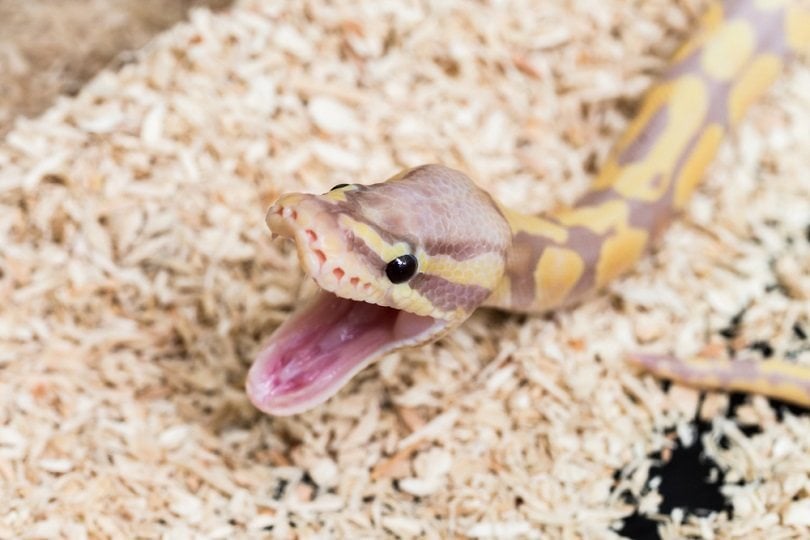
Ideal Diet for Maintaining a Healthy Weight
The best diet for a ball python consists of regular feedings of small rodents. Mice and rats of various sizes and ages are the best source of nutrients for a ball python. Use a feeding schedule or table to ensure that you are giving your snake enough food. Underfeeding your ball python can lead to stunted growth or development.
It is important to source healthy prey for your snake. As discussed, unhealthy or sickly prey can cause health issues for your snake. Make sure you go through a reptile store or rodent breeder that you trust and that provides good results. It is ill-advised to capture live prey from the wild or breed your own prey to feed to your ball python. Use a professional to ensure the best results.
Pinky mice are a good starter prey item, then fuzzies and working up to hoppers and then adults. As your snake gets larger, small rats are ideal. Feed a prey item about the same width as your snake around the middle. There are many opinions online about what the best prey are for ball pythons but it’s always best to consult with an experienced snake veterinarian.
Ball Python Feeding Schedule
| Age | Feeding Frequency |
| 1 month | Every 5 days |
| 2 months | Every 5 days |
| 3 months | Once a week |
| 4 months | Once a week |
| 5 months | Once a week |
| 6 months | Every 7 to 10 days |
| 9 months | Every 7 to 10 days |
| 12 months | Every 7 to 10 days |
| 18 months | Every 10 days |
| 24 months | Every 10 days |
| 36 months | Every 14 days |
How to Measure Your Ball Python
It can be difficult to measure a ball python. They typically wiggle and curl themselves up, so it can be hard to get a good measurement. Similarly, measuring the weight of a ball python can be equally challenging, especially when they are small. Despite the challenge, there are ways to get accurate measurements on your ball python from home.
First, to measure the length, you should use string. Ideally, you can pull a piece of string (or yarn) across the whole length of your ball python and then cut the string. But that is not always possible. You might need to segment your string and get multiple pieces that can cover the whole length. Use notable features on your snake to find good stopping places. Once you have used string to cover the entire length of your ball python, measure each piece of string using a tape measure and add up the lengths. You might have to handle or move your snake to get a good read on the length. You might also have to wait for your snake to shift so you can grab sections that you might have missed.
For the weight, the best thing to do is to weigh a reptile carry bag (or container) and then put your snake inside and measure again. Use a baby or small pet scale for an accurate measurement. Subtract the bag weight without the snake from the weight of the bag with the snake.

Conclusion
Ball pythons grow very quickly when they are young. They will triple in size in their first year and will likely double in size again before they stop growing. Knowing what constitutes healthy growth and a regular diet can help ensure that your snake is growing appropriately and is on the right track for a long and healthy life. Keep in mind that smaller snakes will always be on the small side and early life nutrition impacts their growth rate. This information will help guide you in your first few years of ball python ownership so that you know exactly what to expect and what to look out for.
See Also:
- Enchi Ball Python Morph: Facts, Appearance & Care Guide (with Pictures)
- How Much Does a Ball Python Cost?
Featured Image Credit: Jodi Erickso, Shutterstock




